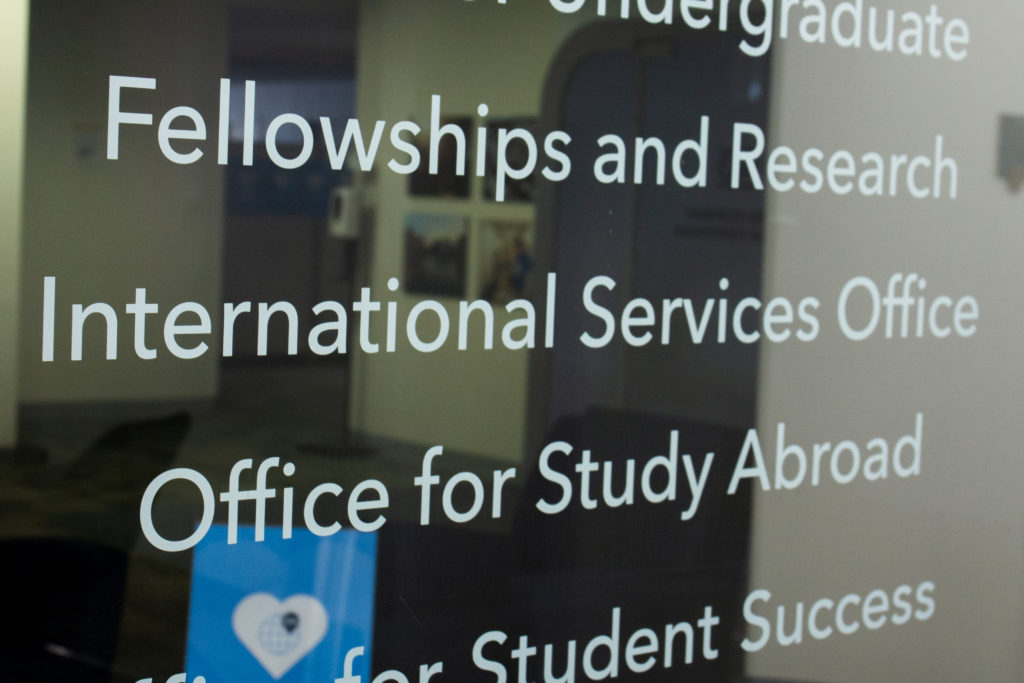International student enrollment among incoming students is on a three-year upswing after dropping by 52.3 percent in 2020 when the pandemic halted overseas travel, according to the Annual Core Indicators of Academic Excellence report last month.
International enrollment for newly admitted students rose from 770 in fall 2020 to 1,260 in fall 2022, a 63.6 percent jump as new enrollment approaches pre-pandemic enrollment levels – last set at 1,614 new international students in 2019. Experts said GW’s increase in international student enrollment is on par with other United States universities because the U.S. has remained a “number one” choice for students globally throughout travel regulation shifts during the pandemic.
Provost Chris Bracey said the rising number of new international students at GW after the onset of the pandemic reflected the school’s “global academic reputation.” He said officials prioritize efforts to recruit students from a large range of countries through a “broader global outreach” strategy that seeks students beyond well-represented countries at GW.
“The number of students studying at GW from India, South Korea, Saudi Arabia, Azerbaijan, Egypt, Brazil and Nigeria has increased due, in part, to progress in our global recruitment efforts,” Bracey said in an email.
Total international student enrollment from India nearly doubled from 227 in 2020 to 444 in 2022 at GW, enrollment from South Korea rose from 185 in 2020 to 217 in 2022 and enrollment from Azerbaijan grew from 31 to 107 in 2022, according to institutional enrollment data. But international student enrollment from China dropped from 1,557 in 2020 to 1,100 in 2022, the data shows.
Jay Goff, the vice provost of student enrollment and student success, said at a Faculty Senate meeting in 2021 that officials increased the University’s enrollment management team in size that year and created “microtrend” committees that track changes in international student markets to rebuild international student enrollment.
Bracey said officials will continue to implement international student recruitment strategies to adapt to the loosening COVID restrictions on international travel policies in China.
“As the rules and regulations change for travel to and from countries across the globe, we will adjust our engagement strategies,” Bracey said.
Total international student enrollment at American universities fell from 1,075,496 students in the 2019-20 school year to 948,519 students in the 2021-22 school year, according to data from Open Doors, an international exchange organization affiliated with the U.S. Department of State. New international student enrollment in the U.S. rose by 7 percent from the 2021-22 school year to the current school year.
Total international student enrollment at GW dropped from 4,170 students in the 2019-20 school year to 3,342 students in the 2022-23 school year.
Experts in international student enrollment said restrictive travel policies banning outbound travel have lowered international student enrollment from China, but “top universities” like GW can rebuild their international student population.
Philip Altbach, a research professor at the Center for International Higher Education at Boston College, said international enrollment numbers at these top institutions are increasing following initial pandemic-related declines. He said “name brands” like GW attract students from overseas who are seeking a strong education.
Altbach said the number of international students coming from China to the United States continues to decrease because Chinese students have access to similar opportunities to attend “high-quality” universities in their home country. The Times Higher Education reported the number of Chinese universities in its top 100 universities in the world more than tripled, growing from two to seven universities between 2021 and 2022.
“The bloom is off the rows, or however you put it, on Chinese enrollments, so people are now looking more toward India and Nigeria,” Altbach said. “Both of these countries are much more dependent on the strength of their local currencies in terms of families being able to afford to send their sons and daughters overseas to study.”
Altbach said as interest in American universities from students in China decreases, university officials are seeking students from countries in Africa to “diversify” their international student population. He said applications to U.S. universities from African countries are increasing nationwide.
Total international student enrollment from Nigeria rose from 36 students in the 2020-21 school year to 45 in the 2022-23 school year, and enrollment from Egypt rose from 13 students in the 2020-21 school year to 17 in the 2022-23 school year.
International student applications from the Middle East and North Africa to U.S. graduate programs increased by 35 percent from 2020 to 2021, according to ICEF, an international education organization.
“Africa is going to be a big player in the international student market going forward,” Altbach said.
In 2018, officials introduced the #YouAreWelcomeHere scholarship, which covers 50 percent of tuition for two international students each academic year to attract more international student applicants, who often have to pay full tuition to attend GW because they cannot receive federal aid as non-U.S. citizens.
Altbach said despite international student enrollment beginning to stabilize after the onset of the pandemic, competitive educational opportunities in countries that provide post-study abroad work visas, which appeal to students that want to settle and work outside of the U.S. in countries like New Zealand and Canada, are reducing demand for American education.
“The great period of expansion of international enrollment in this country is at an end,” Altbach said. “The United States is still the number one preferred destination for many students from overseas, but there’s now a lot of competition out there.”
Alan Ruby, a senior fellow at the University of Pennsylvania’s Alliance for Higher Education and Democracy, said the decline in Chinese student enrollment might be due to the Chinese government’s policies in response to the pandemic, like the zero-COVID policy restricting travel that ended in January. Ruby said enrollment of students from China will likely continue to decrease because of recent restrictions by the Chinese government on the education system that have “reduced” support for students in secondary school.
The Chinese government banned private, for-profit tutoring in 2021 to relieve families of academic pressure.
“They’ve made a number of quite dramatic decisions which have meant that kids will finish high school less ready for international education,” Ruby said.
Jennifer Igbonoba contributed reporting.











